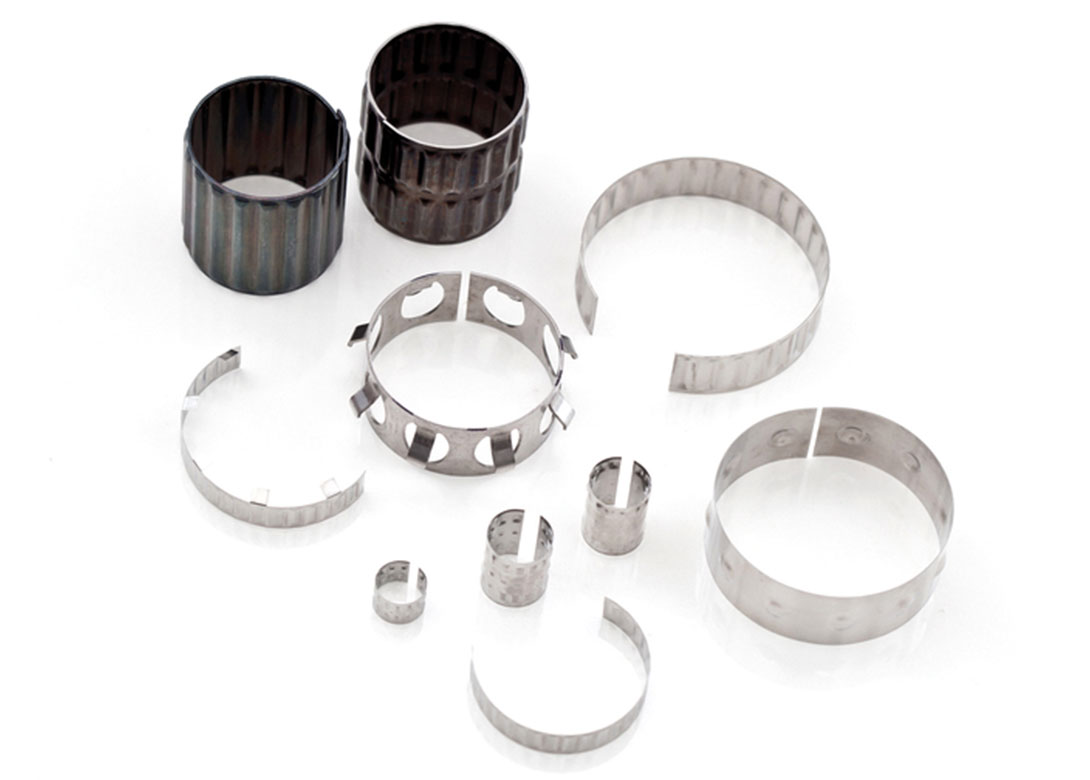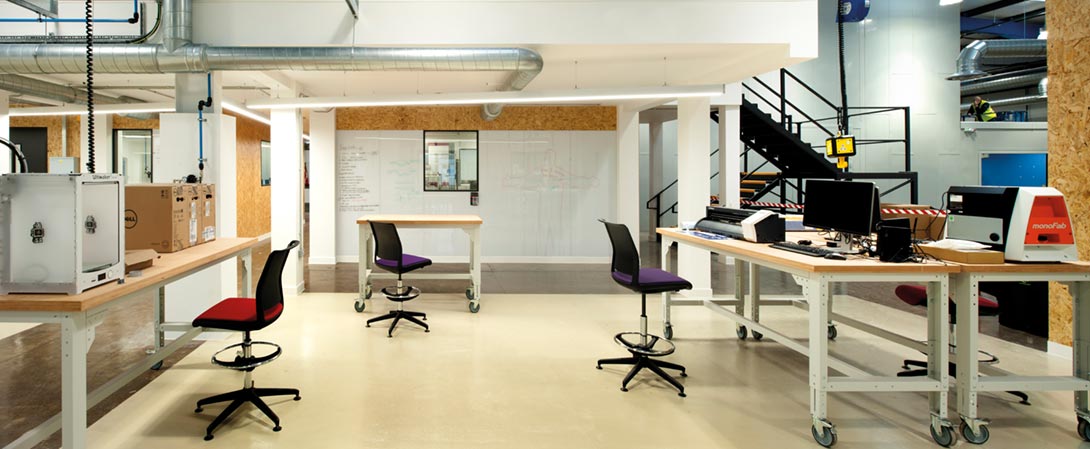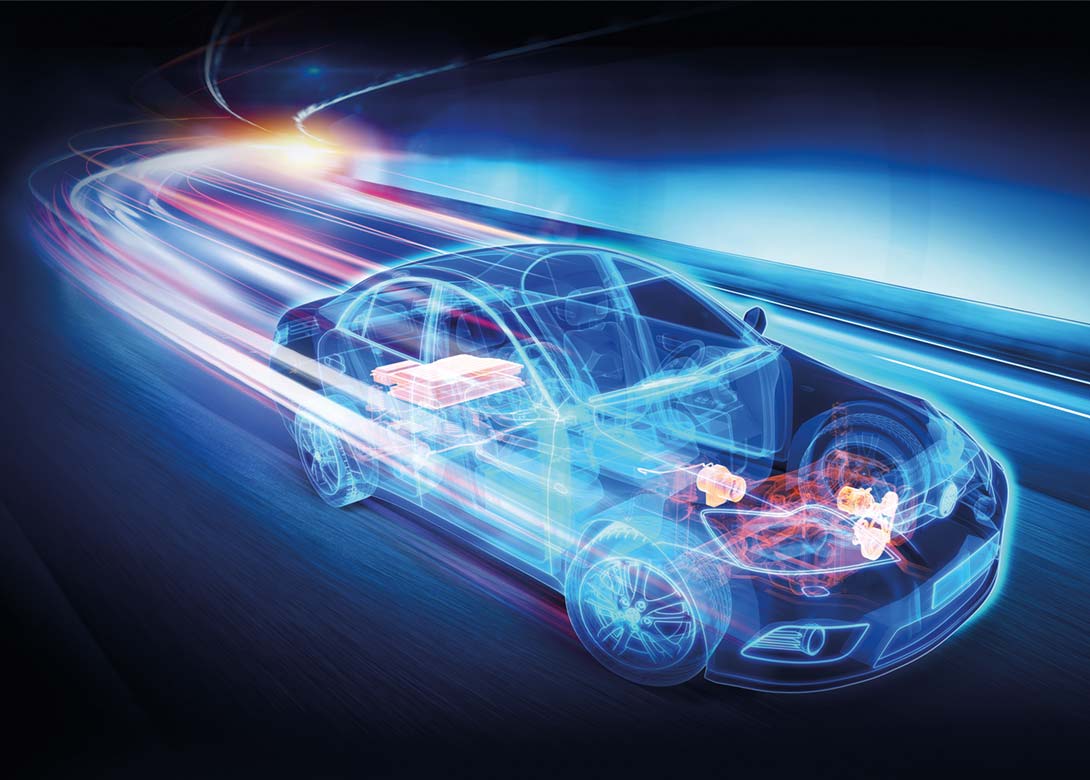
Here we speak to Tom Francis, global segment leader for chassis and powertrain at Saint-Gobain S.A, about the importance of OEMs and engineers understanding the capabilities of fastening technology, as well as the role fastening technology can play within megatrends.
When it comes to chassis and powertrain applications, what fastening solutions can Saint-Gobain provide? What are the benefits of these solutions?
“The main product we focus on is the RENCOL® Tolerance Ring, which is essentially a radially sprung fastener. Typically, it uses a spring material in a circular arrangement with ‘bumps’ on either the outside or the inside. As you compress the tolerance ring between two cylindrical components, you squeeze these ‘bumps’ and they act like springs – helping to fix the two components together.
The RENCOL Tolerance Ring can be used in three different ways within applications. The first method is as a simple engineered fastener – for instance if the user is looking to fasten a bearing into an aluminium housing. The next is as a torque drive, for mounting a gear onto a spindle – by applying a torque through the tolerance ring. The final method is as precision torque or overload protection, and this is essentially as a slip clutch mechanism. This is where we design a tolerance ring to slip at specific torques, if the user for instance wants to protect gears.
These different methods have a variety of benefits but all of them provide assembly process efficiency. For instance, by using a RENCOL Tolerance Ring as an engineered fastener, it can offer reduced assembly force over a traditional press fit of a system and it enables the user to relax tolerances on the mating components. It also allows for thermal differentiation expansion between two components, which is a big benefit. Whilst different materials will grow and shrink at a different rate, as they go through a thermal cycle, the tolerance ring helps maintain a good fit across the temperature range.
With the torque drive method, the tolerance rings provide assembly process efficiency through the use of less components, such as key waves or splines, which helps speed up the process and provide cost savings. With the precision torque method, it is an overall system cost, as tolerance rings are a reduced packaging solution – helping to reduce weight and save space. We can also design tolerance rings very specifically for the torque, which gives users more options compared to ‘off the shelf’ components available at only set torque levels.”
What are the key challenges when it comes to chassis and powertrain applications and how can fastener technology help to overcome them?
“There are four big challenges we see in the chassis and powertrain sector. The first is the efficiency of manufacture, which was explained in the previous question. The second challenge is NVH (noise, vibration and harshness), which is a big topic at the moment. As the internal combustion engine (ICE) gets removed from the car, noises become more apparent and a lot of customers are focusing on how to eliminate them.
As a business we can help with NVH because our products are springs, which means we can design the stiffness of those springs. We are working directly with OEMs on NVH and using our sprung fasteners to help isolate noise and vibrations.
The third challenge is around the environment and carbon footprint – including recyclability and energy uses in factories. RENCOL Tolerance Rings allow for much better recyclability of the application – compared to if adhesives were used in an application. This is because RENCOL Tolerance Rings can be pushed apart quite simply, resulting in the application being dismantled and recycled. It is much more difficult to recycle a system that has been glued together with adhesive.
The final challenge is around thermal management, which means either removing heat from the system or allowing the system to operate properly through a thermal cycle. We have actually developed a new product, an aluminium clad tolerance ring, which drastically improves the thermal cycle of the system. As a business we are always looking at how tolerance rings can be used to help ‘wick the heat away’ from systems.”

At what stage do you normally get involved with OEMs and tier suppliers on their applications? How important is it to have a close partnership with customers?
“We would always prefer to be involved at the beginning of a project because when we work closely with customers, we can come up with a more effective solution for them. However, whilst the majority of what we do is with project teams, we still get customers who come to us because they have serious difficulties on their production line.
The reason why we are only invited to get involved at such a late stage, rather than earlier, is that some customers still see us as a simple commodity product. However, when we start working with these customers, and they realise how much engineering goes into the product, they appreciate the need to bring us in earlier and usually work with project teams on future applications.
To encourage customers to get us involved earlier in projects we have started an additional service, which we call a ‘hackathon’ service. This is where we invite customers to our plant and they can see our capabilities first-hand. We then go through the process of problem definition, idea creation, rapid prototyping – using 3D printing, and rudimental testing, all within two or three days. This helps us really showcase our capabilities, because we can get our predictive design and processing engineers involved and our customers can really see the depth of knowledge needed to provide a good solution. More often than not they will go back to their offices with initial prototypes in their hands.”
What role does innovation play within chassis and powertrains and is there still room to innovate?
“For us innovation is absolutely critical, which is why we invest quite heavily in our testing, R&D, and prototyping capabilities. When you’re in an area that is classed as a ‘commodity’, you have to be continually innovating in order to show your engineering prowess and the value you can bring. There are huge amounts of competition from very low cost, but very low technology, competitors. Therefore, by innovating, we can comfortably demonstrate that we can differentiate ourselves from these companies – who cannot give the overall end-to-end service we can provide.
When it comes to the potential for innovation, we find there are still huge amounts of areas we can innovate. The reason for this is the applications and markets we are focused on are also innovating and developing, so we need to keep up with fast changes and present new ideas for the challenges our customers are facing.
The ideas for innovations come from both the applications/customers, as well as through R&D work we do internally. When it comes to customers, and the projects we are working on, we find there is a mixture of customers who are really pushing the boundaries on certain projects, as well as other customers looking for a strategic market approach, such as megatrends.”

What are the main megatrends your department is working on and what fastening solutions have you been able to offer?
“There are two big megatrends that are impacting the chassis and powertrain sector at the moment and they are lightweighting and electrification. Whilst lightweighting has been around for a number of years, there is still huge pressure on reducing weight – especially with the increasing weight in battery packs due to added features within car interiors.
Whilst lightweighting is still a big focus for us, electrification has also recently become a big challenge. As soon as OEMs start electrifying a vehicle there is a point when the internal combustion engine (ICE) is off, but there are a lot of parasitic systems, which are usually attached to the ICE, that now have to be driven electrically – meaning individual driven electric motors for thing such as oil pumps, water pumps, etc. We have therefore really upskilled and improved our knowledge on how these motors work and the impact our products have on them.
The EV movement is a great opportunity for us, as we have a big value proposition within electrification in a number of applications. We are embracing this megatrend and believe we will see a real shift this year, as it is the first year of the 95g of CO2 per kilo requirement in Europe. When you look at the average fleet, the CO2 emissions are around 124g of CO2 per kilo, which means OEMs have a huge distance to go this year in order to comply with that legislation.
I think what is slightly holding back the EV movement is the perception of the general public. People want electronic vehicles to give them 400 miles worth of range, but the technology is best suited to smaller vehicles, with smaller batteries, where there is less of an environmental impact.
There needs to be a mental shift from how we use electric vehicles in order for it to be fully adopted. A good example is the shift in mobile phone technology. In the 1990s, users expected their mobile phone battery to last them 3 – 5 days at a time. However, as soon as people moved to a smart phone there was acceptance that they had to charge their phone every day. This same type of shift needs to happen with EV, people know how to deal with petrol technology, but there needs to be a shift from ‘filling up’ every week with petrol, to simply charging your car at home each night or during the day at work.”


Having spent a decade in the fastener industry experiencing every facet – from steel mills, fastener manufacturers, wholesalers, distributors, as well as machinery builders and plating + coating companies, Claire has developed an in-depth knowledge of all things fasteners.
Alongside visiting numerous companies, exhibitions and conferences around the world, Claire has also interviewed high profile figures – focusing on key topics impacting the sector and making sure readers stay up to date with the latest developments within the industry.
Don't have an account? Sign Up
Signing up to FastFixTechnology.com enables you to manage your account details.